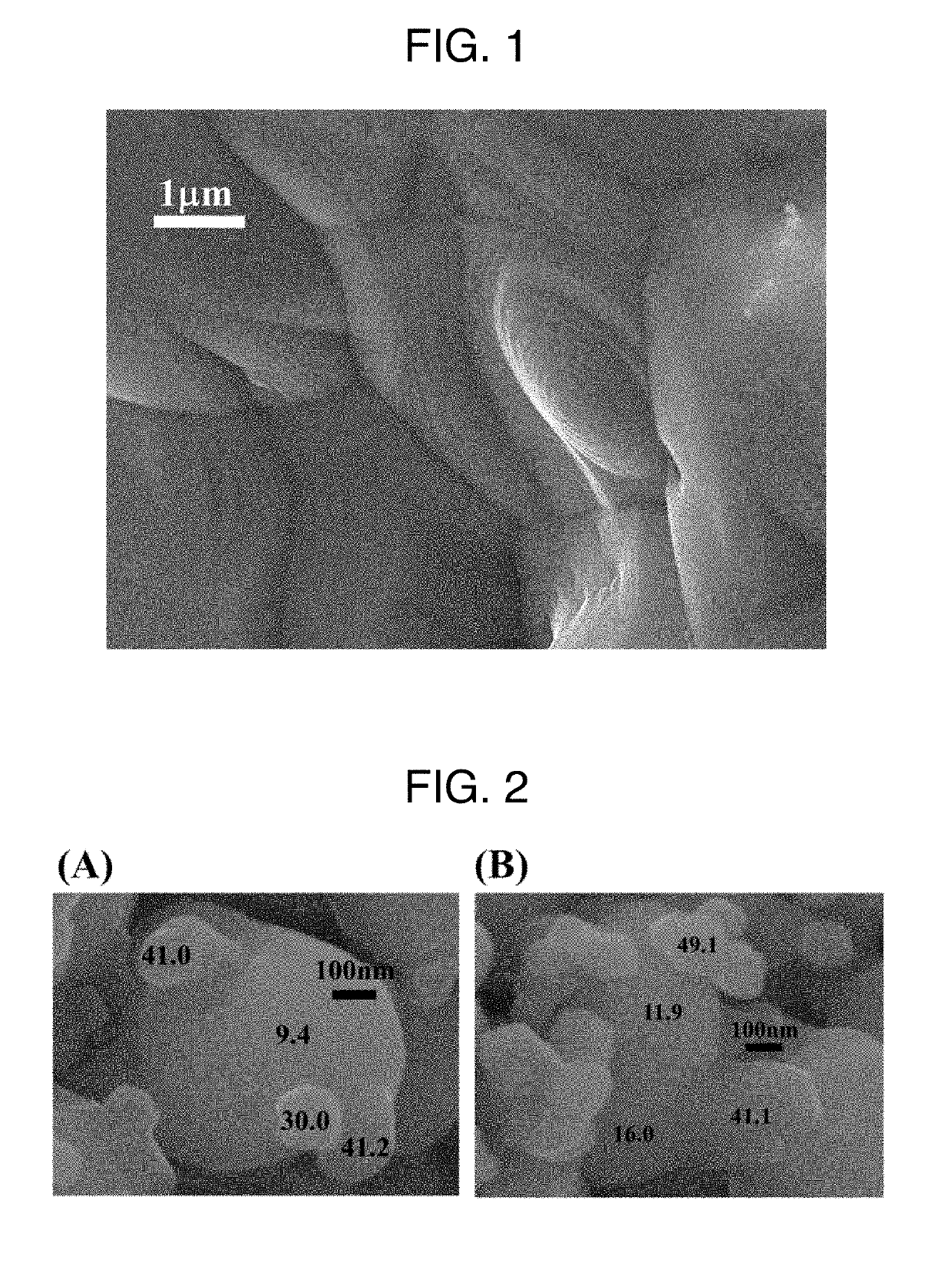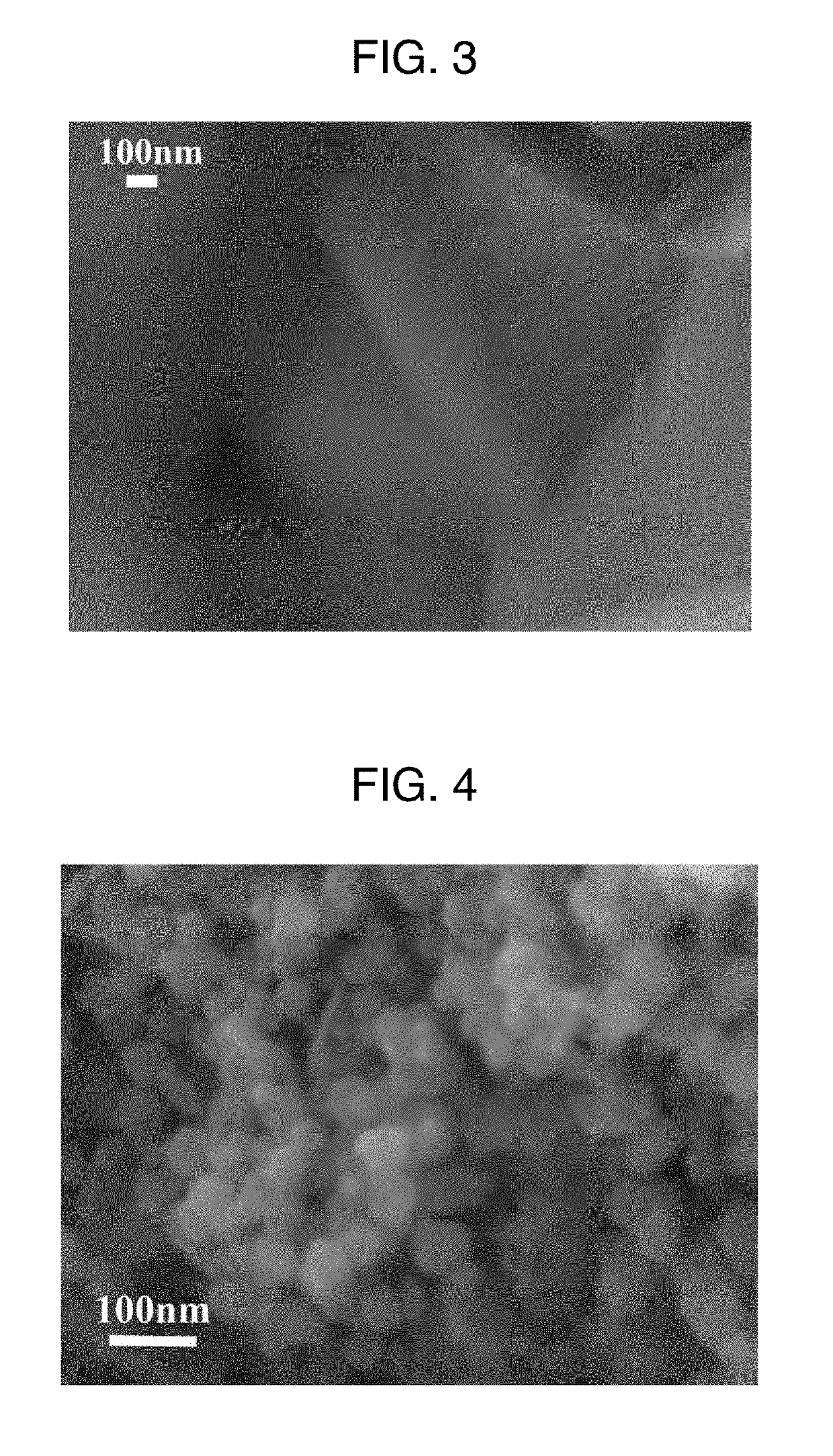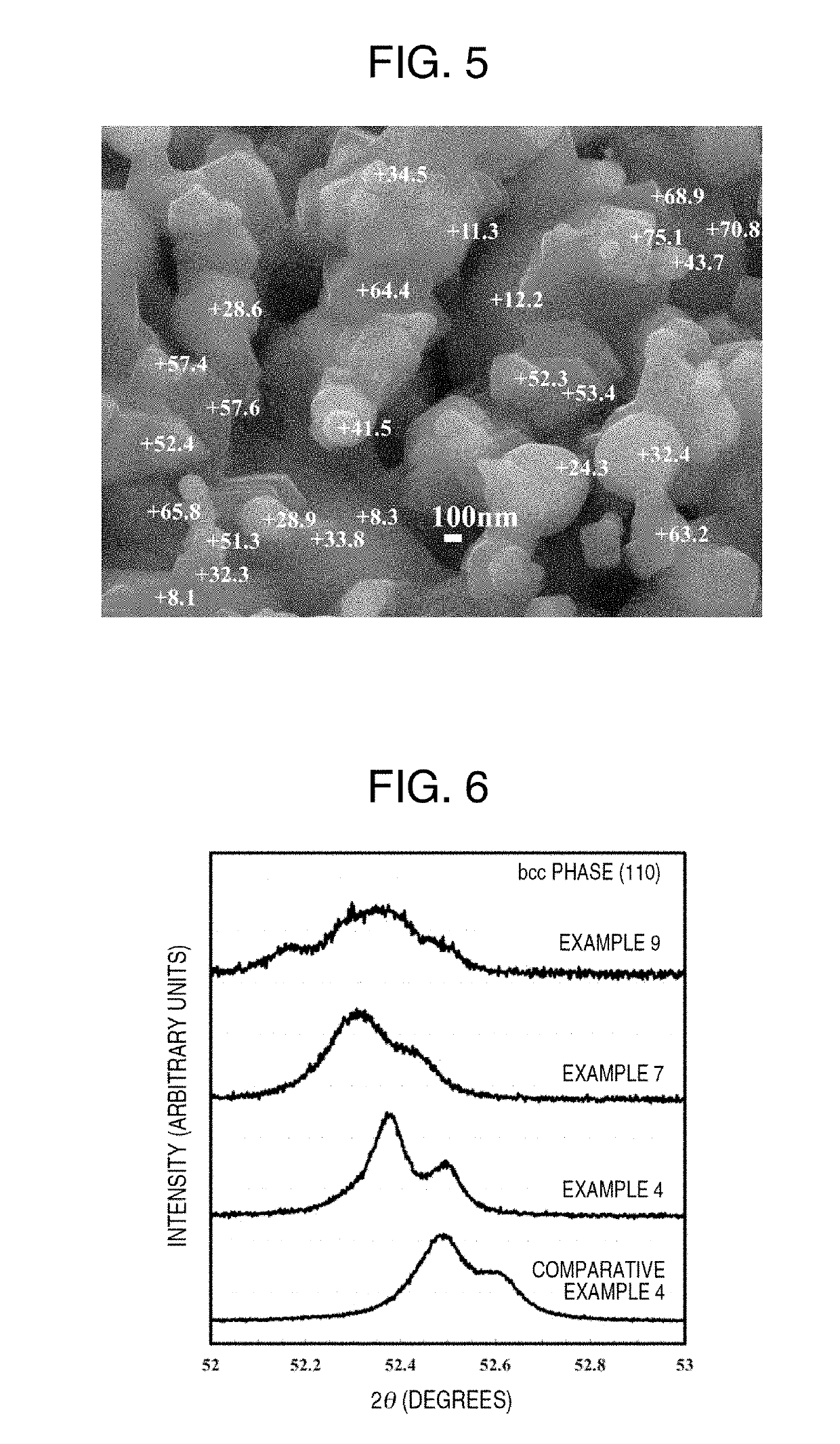Magnetic Material and Manufacturing Method Therefor
a magnetic material and manufacturing method technology, applied in the field of soft magnetic materials, can solve the problems of deterioration of magnetic properties, increased cost of punching and lamination steps, and increased cost of punching and lamination steps, and achieves high saturation magnetization, small eddy current loss, and high oxidation resistance.
- Summary
- Abstract
- Description
- Claims
- Application Information
AI Technical Summary
Benefits of technology
Problems solved by technology
Method used
Image
Examples
examples 14 to 16
[0288]Magnetic materials of the present invention were produced in the same manner as in Example 13, except that the Mn content was set to the amount shown in Table 3. In all the examples, the presence of the first phase and the presence of the second phase were confirmed.
[0289]The measurement results of the phases, compositions, particle diameters, and magnetic properties of these examples are shown in Table 3.
[0290]It is also noted that the analysis of the Mn composition amount and the like of the bcc phase was carried out in the same manner as in Example 13.
[0291]In these examples, the K content relative to the whole magnetic material including Mn, Fe, O, and K was 0 atom %.
examples 17 and 18
[0292]Magnetic materials of the present invention were produced in the same manner as in Example 9, except that the Mn content, the reduction temperature, and the reduction time were set as shown in Table 4, and the rate of temperature increase and rate of temperature decrease were set as shown in Table 4. Further, in both the examples, the presence of the first phase and the presence of the second phase were confirmed. The measurement results of the phases, compositions, particle diameters, and magnetic properties of these examples are shown in Table 4. For comparison, the results of Example 9 in Table 1 are also provided in Table 4.
[0293]The “fast” condition and the “slow” condition of the rate of temperature increase / decrease shown in Table 4 are as follows.
(Rate of Temperature Increase)
[0294]“Fast”: Temperature is increased at 10° C. / min until the predetermined reduction temperature.
“Slow”: Temperature is increased at 10° C. / min up to 300° C., and from 300° C. to the predetermin...
example 19
[0297]The magnetic material powder of Example 9 was placed in a 3 ϕ cemented carbide metal die made of tungsten carbide, and then electric current sintering was carried out in a vacuum at 150° C. under 1.4 GPa.
[0298]Next, this electrically-sintered body was annealed in hydrogen at 1000° C. for 1 hour to prepare a solid magnetic material. The “slow” condition was selected as the rate of temperature increase and the “fast” condition was selected as the rate of temperature decrease. FIG. 9 is an SEM image of the surface of the solid magnetic material of this example. A large number of crystal boundaries were observed to be present in the sintered layer. FIG. 10 is an oxygen characteristic X-ray surface distribution map of the region of FIG. 9 obtained using SEM-EDX. In the white part, the oxygen content is high, and it can be seen that this part is a wustite phase. In the other examples as well, a method that is basically the same as this was employed when distinguishing whether the ph...
PUM
| Property | Measurement | Unit |
|---|---|---|
| volume fraction | aaaaa | aaaaa |
| crystal grain size | aaaaa | aaaaa |
| crystal grain size | aaaaa | aaaaa |
Abstract
Description
Claims
Application Information
 Login to View More
Login to View More - R&D
- Intellectual Property
- Life Sciences
- Materials
- Tech Scout
- Unparalleled Data Quality
- Higher Quality Content
- 60% Fewer Hallucinations
Browse by: Latest US Patents, China's latest patents, Technical Efficacy Thesaurus, Application Domain, Technology Topic, Popular Technical Reports.
© 2025 PatSnap. All rights reserved.Legal|Privacy policy|Modern Slavery Act Transparency Statement|Sitemap|About US| Contact US: help@patsnap.com



